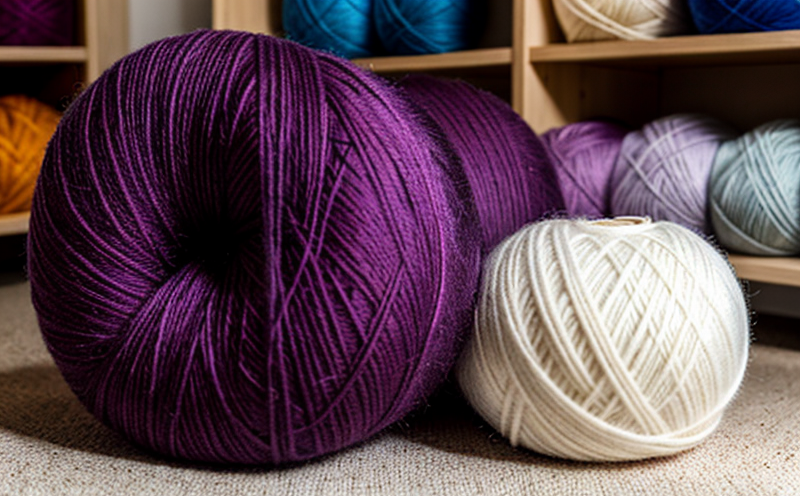JIS L1098 Testing Methods for Yarn Hairiness
The JIS L1098 method is a critical standard in assessing yarn hairiness, which refers to the degree of projection or protrusion of individual fibers from the yarn surface. This testing procedure is essential in industries where fiber quality and performance are paramount, such as textile manufacturing, garment production, and home textiles. Hairiness can significantly influence the texture, comfort, and durability of fabrics. Understanding hairiness is crucial for quality managers, compliance officers, R&D engineers, and procurement teams who need to ensure product consistency and meet customer expectations.
The JIS L1098 test measures the average diameter of fibers protruding from the yarn surface by using a specific instrument known as a fiber projection tester. This device operates under controlled environmental conditions to ensure accurate measurement. The test parameters include temperature, humidity, and specimen preparation, which are critical for obtaining reliable results.
The scope of JIS L1098 is particularly relevant in weaved sectors where yarn quality directly impacts the final product's performance. The test helps manufacturers understand how different processing techniques or raw materials affect hairiness. This information is vital for optimizing production processes and ensuring that the end product meets customer requirements and industry standards.
For R&D engineers, JIS L1098 provides a standardized method to compare various yarn types and treatments. By identifying optimal hairiness levels, they can enhance fabric performance, improve comfort, and reduce material wastage during processing. Compliance officers benefit from the objective data provided by this test when ensuring that products meet international quality standards.
In summary, JIS L1098 is a fundamental tool in textile testing for yarn hairiness. It offers precise measurements of fiber projections on yarn surfaces, aiding manufacturers in achieving consistent product quality and meeting market demands. This service ensures that textiles are not only aesthetically pleasing but also functional and durable.
Applied Standards
| Standard | Description |
|---|---|
| JIS L1098:1995 | Japanese Industrial Standard for measuring the average diameter of fibers protruding from yarn surfaces. |
| JIS L3827:2006 | Standard procedure for preparing specimens prior to hairiness testing. |
The JIS L1098 method is widely used in the textile industry, particularly for yarn hairiness assessment. This standard ensures that all measurements are conducted under uniform conditions, enhancing reliability and consistency across different laboratories. It complements other standards such as JIS L3827, which provides detailed instructions on specimen preparation.
The combination of these standards helps ensure that the testing process is both precise and replicable, allowing for accurate comparisons between different samples or treatments. This level of standardization is crucial in maintaining high-quality textile products across various sectors.
Customer Impact and Satisfaction
- Enhanced product quality through consistent hairiness measurement.
- Increased customer satisfaction by delivering fabrics that meet desired texture and comfort standards.
- Improved process optimization leading to reduced material wastage during production.
- Easier compliance with international quality standards, enhancing market access.
Implementing JIS L1098 testing has a direct positive impact on customer satisfaction and business performance. By ensuring that fabrics meet the desired hairiness levels, manufacturers can improve product aesthetics and functionality. This leads to higher customer satisfaction and repeat business, which is critical for maintaining market share.
The ability to consistently measure yarn hairiness allows for process optimization, reducing material wastage and enhancing efficiency. Compliance with international standards also broadens market access, making products more appealing to a global audience. Ultimately, these factors contribute to increased profitability and customer loyalty.
International Acceptance and Recognition
The JIS L1098 method is internationally recognized for its reliability in measuring yarn hairiness. It is widely used by textile manufacturers across Asia, Europe, and North America due to its standardized approach and consistent results.
This standard has been adopted by many leading brands and suppliers who prioritize quality control and consistency in their product offerings. The use of JIS L1098 not only ensures that products meet high-quality standards but also enhances the reputation of manufacturers globally.
International acceptance and recognition of this method contribute to broader market access, enabling companies to compete effectively on a global scale. By adhering to these standards, textile producers can build trust with customers and suppliers, fostering long-term relationships.





